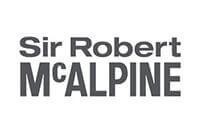Laboratories often handle small quantities of highly hazardous powders, from potent APIs to nanomaterials. Controls must prioritise containment, reliable extraction and disciplined clean-down to keep exposures as low as reasonably practicable under COSHH.
Containment first
Use balance enclosures, gloveboxes or isolators for weighing, dispensing and transfers. Keep sashes low on cabinets and avoid open bench work. Plan material flow to keep clean and dirty tasks separated, with dedicated pass-throughs.
Local exhaust ventilation
Where open handling is unavoidable, apply LEV close to the emission point. Select filtration appropriate to the hazard: H13/H14 HEPA for fine or carcinogenic dusts, and ULPA where nanomaterials or high-potency compounds require tighter control. Verify capture with smoke visualisation and document face velocities.
Housekeeping without re-dispersion
Prohibit sweeping and compressed air. Use an industrial vacuum with high-efficiency filtration for floors, benches and equipment. Damp wipe touch points, seal waste immediately, and label by hazard class.
Procedures and verification
Implement task-based risk assessments, change gloves and PPE between stages, and log cleaning. Use a particulate monitor to confirm that controls keep background levels stable during operations.
Practical takeaways
- Choose containment (glovebox/enclosure) for high-hazard tasks.
- Use LEV with H14 or ULPA filtration matched to the risk.
- Validate capture and record face velocities and inspections.
- Vacuum-only housekeeping; damp wipe and seal waste immediately.
- Monitor PM trends and maintain clear, signed procedures.
By combining containment, effective LEV and disciplined housekeeping, labs can maintain safe, repeatable handling of hazardous powders while meeting COSHH obligations.
Speak with a Dust Expert
Every site and project is different. If you’d like tailored guidance for your specific scenario, our Dust Experts are here to help.













